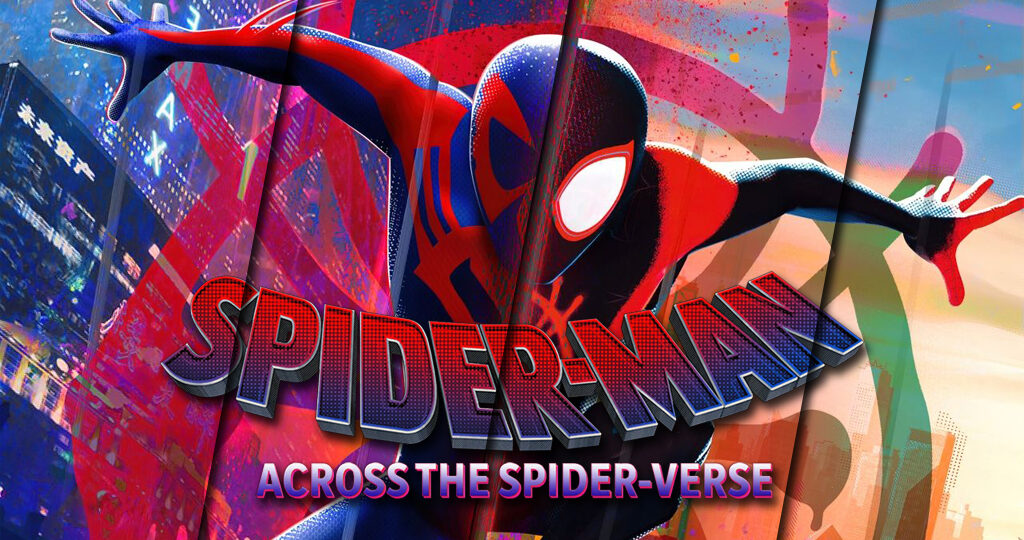Smiling students lined up last weekend for the eight o’clock showing of a highly anticipated and groundbreaking film. Winthrop DSU coordinators were suited up in recognizable web suits, engaging with the crowd as anticipation rose.
Seats were filled quickly as popcorn, candy and drinks were passed out. Some viewers came to Dina’s Place thirty minutes prior to the showtime and still had to wait in a long line. As the screen slowly faded to black, a picturesque watercolor opened the film.
For Grace Mixon, a freshman art education major, this was their first time watching “Spider-Man: Across the Spider-Verse”. They had a unique view from the perspective of an artist. “I was impressed with the details, from the colors used in the background, to the stylizing of the characters. It was also really cool how Hobie Brown was a distinct style from everyone else.”
The first film, “Spider-Man: Into the Spider-Verse” introduced a new stylized animation technique to the industry. It became a flagship for many succeeding films such as “The Michaels vs. the Machines” (2021), “Puss In Boots: The Last Wish” (2022), and most recently, “Teenage Mutant Ninja Turtles: Mutant Mayhem” (2023).
The new film, “Spider-Man: Across the Spider-Verse”, has grossed $381 million dollars in the box office as of August 28, and the number continues to grow.
Present Marvel fans talked amongst each other about their excitement for the film as characters Miles Morales and Gwen Stacy returned with a new dynamic that explored hesitant romantic feelings.
However, the film also caught the attention of creatives alike who marveled at the artistry used throughout. From unique characters to the different dimensions within “Across the Spider-Verse”, each element had its own flare.
Spider-Punk, known in the film as Hobie Brown, proved a challenge for experienced animators because of his dynamic styling. According to the website Polygon in “Hobie hates consistently, so the animators made that a reality” by Petrana Radulovic, 24 frames per second is the standard for the majority of animated films. However, Hobie Brown’s posing was changed every third frame. This made his character more irregular and distinctive than others around him.
Brown is also seen to have various colors surrounding him that change depending on what he is doing or who he is near.
Hobie Brown’s color changes to pink as soon as Morales and Mayday make contact. Pink is a color associated with the emotion of endearment and the animators deliberately included this to show his love for people he values.
Chelsea Gordon-Ratzlaff, the supervising animator for “Across the Spider-Verse”, said in a Twitter post that the “pipeline team invented all kinds of crazy stuff that let us do even crazier stuff in animation.”
The universes within the film are also intentionally very artistically distinct. Before the film was released, cowriters Chris Miller and Phil Lord said in an interview with Collider that the new worlds are ones to marvel.
In the interview Chris Miller said, “. . .And so the idea that we’d be going to different dimensions really opened up an opportunity artistically to have each world have its own art style, and to be able to push the folks at ImageWorks to develop a way to have each dimension feel like it was drawn by a different artist’s hand.”
Gwen Stacy’s world is crafted by blue and pink watercolors that portray the tone or emotions within a given scene. For example, the opening scenes of the film show Stacey feeling isolated and lonely, and she has a cool color palette that is in stark contrast with the warm oranges and reds around her.
During tense moments, the watercolor background can be seen to “bleed” into one another.
The third installment of the Spider-Verse series was originally scheduled to release on March 29, 2024, but the date has been indefinitely delayed with the unfolding events of the SAG-AFTRA strike, Collider said. Until the voice actors are available again, fans will be left wondering what the filmmakers will do next.




